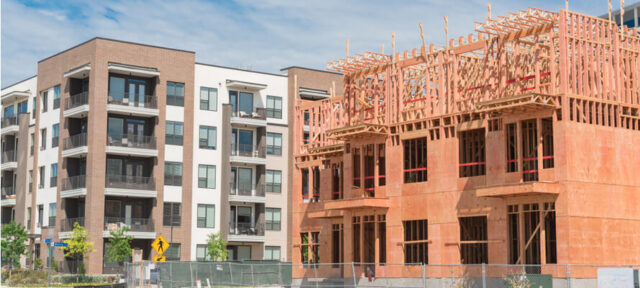For the first time in years, renters, not landlords, have the leverage. Apartment owners across the country are offering months of free rent, slashing asking prices, and throwing in incentives just to keep occupancy up. According to The Wall Street Journal, the national average rent fell 0.3% last month, the biggest September drop in over 15 years. In simple terms: we are officially in a renter’s market in 2025, and it may last longer than many expect.
For real estate investors, especially in multifamily, this shift isn’t a reason to panic; it’s a moment to get strategic. Market cycles don’t eliminate opportunity; they expose it. The key is understanding what’s really driving this downturn, how long it may last, and where the opportunities still exist.
Why Rent Growth Has Stalled
National apartment rents are growing at their slowest pace in a decade. In many major metros, they’re declining. Three forces are driving this renter-friendly environment:
1. Oversupply of New Apartments
Developers built aggressively during the pandemic when debt was cheap and population growth surged in Sunbelt markets like Austin, Phoenix, Nashville, Tampa, and Denver. That building wave didn’t hit the market all at once due to supply-chain delays, but now those units are online at the exact moment demand is cooling.
Landlords are competing fiercely to fill brand-new Class A properties with rooftop pools and coworking lounges. This is why concessions are highest in the luxury tier of the market.
2. Job Market Weakness Among Young Renters
The renter pool is softening. Unemployment among 20–24 year-olds is 9.2%, more than double the national rate. These are prime renter demographics. If young job seekers can’t find stable work, they don’t sign leases, they move home or get roommates. That slows absorption and pushes rents down.
3. Migration and Demand Have Slowed
Many markets that boomed from 2020–2023 are now cooling. Workers called back to corporate offices are leaving remote-work cities. International immigration has slowed. Demand is still there, but it’s no longer overwhelming supply like it did three years ago.
Where the Renter’s Market Is Hitting Hardest
The softest rental markets in 2025 are in high-growth metros that were overbuilt:
-
Phoenix
-
Austin
-
Houston
-
Atlanta
-
Denver
-
Nashville
-
Las Vegas
-
Orlando
These cities are now competitive battlegrounds for tenants. According to Zillow, 37% of rentals offered some form of concession in September, the highest ever recorded for that month.
Meanwhile, rents are still rising modestly in Northeast and Midwest markets where construction has been limited—places like Cleveland, Cincinnati, Indianapolis, and parts of New England.

How Landlords Are Responding
To keep buildings full, multifamily owners are trading price for occupancy. Here’s what we’re seeing across the country:
| Strategy | Example |
|---|---|
| Free rent | 6–12 weeks free on new leases |
| Reduced rent | $150–$350/month price cuts |
| Lower deposits | $0 move-in |
| Gift-based incentives | Free parking, moving credits, Visa gift cards |
| Lease structuring | Charging rent for 9 months out of 11 |
Occupancy is holding, but net operating income (NOI) is taking a hit. When concessions rise, NOI falls, and property values follow.
The Investor Takeaway: Cash Flow Wins in a Renter’s Market
This phase of the cycle tests weak operators and rewards disciplined ones. Here’s how I’m thinking about the market:
What to Watch Out For
-
Overleveraged deals bought at peak pricing in 2021–2022
-
Syndicators who used floating-rate debt without proper caps
-
Class A assets in oversupplied Sunbelt markets
-
Operators ignoring rising expense costs (insurance, taxes, repairs)
Where the Opportunities Are
-
Value-add Class B/C deals where concessions are minimal
-
Secondary and overlooked Midwest markets
-
Distressed property purchases from tired landlords
-
Off-market deals where sellers are chasing loan maturity relief
Down cycles always transfer assets from impatient investors to patient ones.
How Long Will This Last?
Most analysts expected rent growth to rebound by late 2025. That timeline has now been pushed back. Many in the industry—including large firms quoted by the WSJ, don’t expect strong rent growth until late 2026 or even 2027. Yardi Matrix recently lowered rent projections for 2027, citing a longer recovery due to continued new apartment supply.
Translation: This renter’s market isn’t going away anytime soon.
Final Thoughts
If you invest smart, this environment is not a problem, it’s an edge. The market is rewarding operators who:
-
Buy based on cash flow, not speculation
-
Use long-term fixed-rate debt
-
Underwrite realistically, with concessions included
-
Focus on tenant experience and retention
-
Stay local and hands-on
Real estate is cyclical. Times like these are when future portfolios are built.
Want to Go Deeper?
If you want a clear framework for investing in this environment, I put together a free guide that explains exactly how inflation impacts rent growth, property values, and debt.
Download my free guide: Inflation and Real Estate
It will help you understand why some investors struggle in inflationary markets—and how others build long-term wealth through cash-flowing assets.



